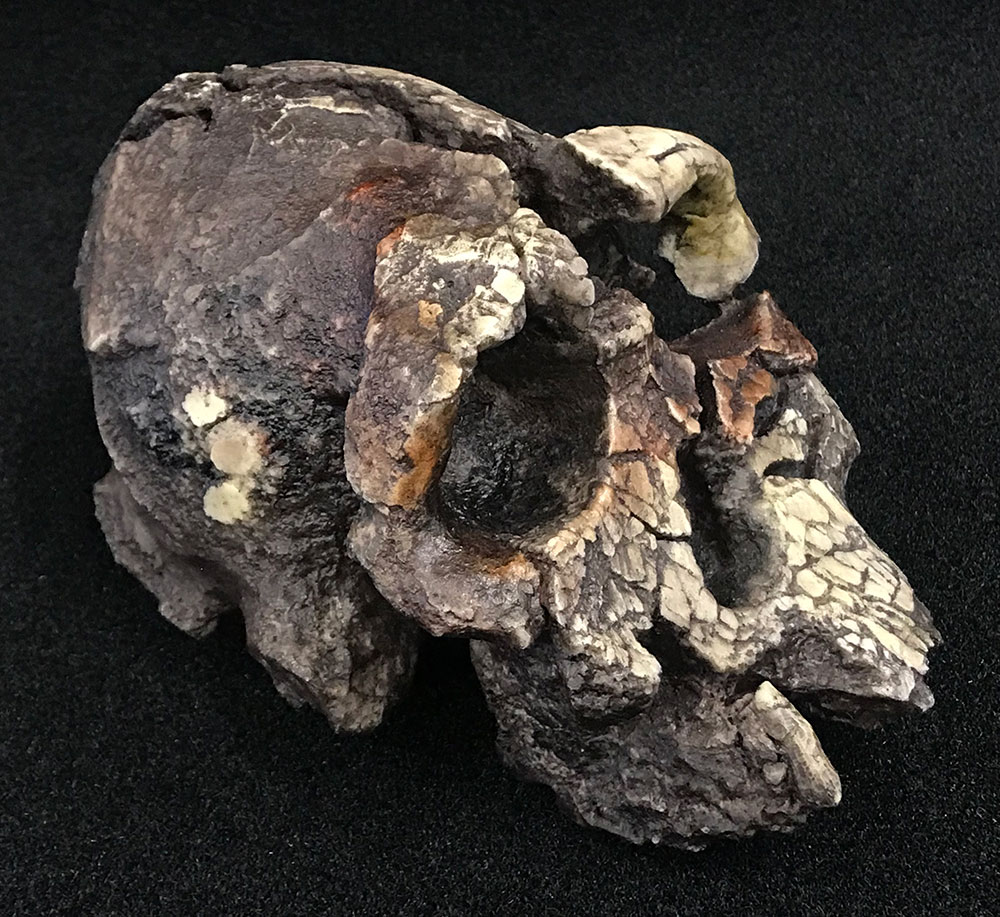Kenyanthropus platyops
Cranium KNM-WT-40000 - 3.5 Million Years Ago
 The Kenyanthropus platyops skull KNM-WT-40000 was discovered in 1999 by J. Erus (a member of Meave Leakey's team) west of Lake Turkana, Kenya. The specimen was described in Nature in 2001. Leakey and colleagues viewed the finds as being distinct enough from Australopithecus, particularly in the marked flatness of the face, to justify a new genus and species, Kenyanthropus platyops (meaning "flat-faced hominid from Kenya"). Providing a second hominin species in the period from 3 to 3.5 MYA, this specimen challenges A. afarensis "Lucy" as the direct ancestor of modern humans. Its classification as a separate genus is not uncontroversial, especially given the damaged condition (1,100 face pieces) in which the skull was found. Some scholars suggest that the skull's condition was such that its position in hominin evolution is hard to assess and that it may represent an australopithecine.
The Kenyanthropus platyops skull KNM-WT-40000 was discovered in 1999 by J. Erus (a member of Meave Leakey's team) west of Lake Turkana, Kenya. The specimen was described in Nature in 2001. Leakey and colleagues viewed the finds as being distinct enough from Australopithecus, particularly in the marked flatness of the face, to justify a new genus and species, Kenyanthropus platyops (meaning "flat-faced hominid from Kenya"). Providing a second hominin species in the period from 3 to 3.5 MYA, this specimen challenges A. afarensis "Lucy" as the direct ancestor of modern humans. Its classification as a separate genus is not uncontroversial, especially given the damaged condition (1,100 face pieces) in which the skull was found. Some scholars suggest that the skull's condition was such that its position in hominin evolution is hard to assess and that it may represent an australopithecine.
Read more Australian Museum's Kenyanthropus platyops
- Hominin Skulls - Select a Species
- Ardipithecus kadabba
- Ardipithecus ramidus
- Australopithecus afarensis
- Australopithecus africanus
- Australopithecus anamensis
- Australopithecus garhi
- Australopithecus sediba
- Denisovans
- Homo antecessor
- Homo erectus
- Homo floresiensis
- Homo habilis
- Homo heidelbergensis
- Homo naledi
- Homo neanderthalensis
- Homo rudolfensis
- Homo sapiens
- Kenyanthropus platyops
- Ororrin tugenensis
- Paranthropus aethiopicus
- Paranthropus boisei
- Paranthropus robustus
- Sahelanthropus tchadensis

